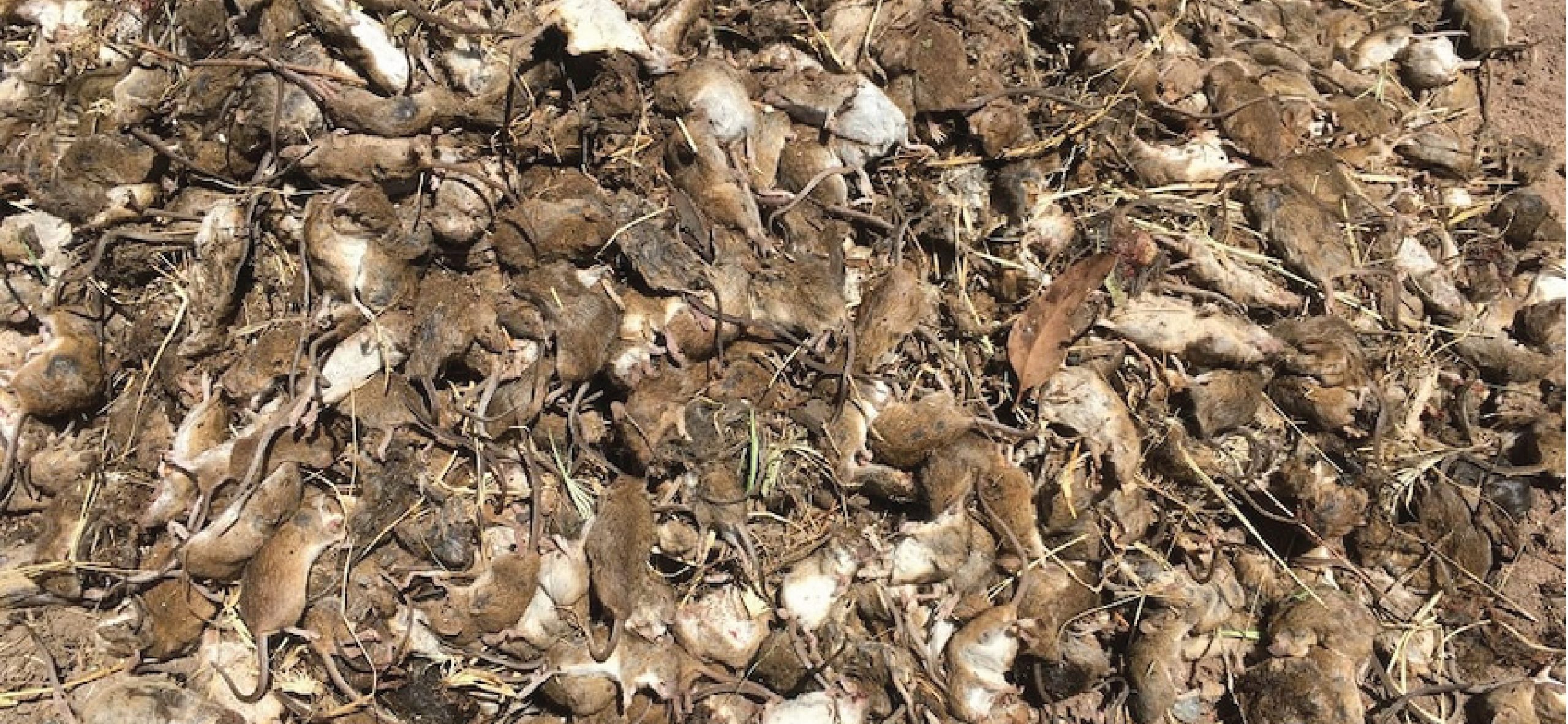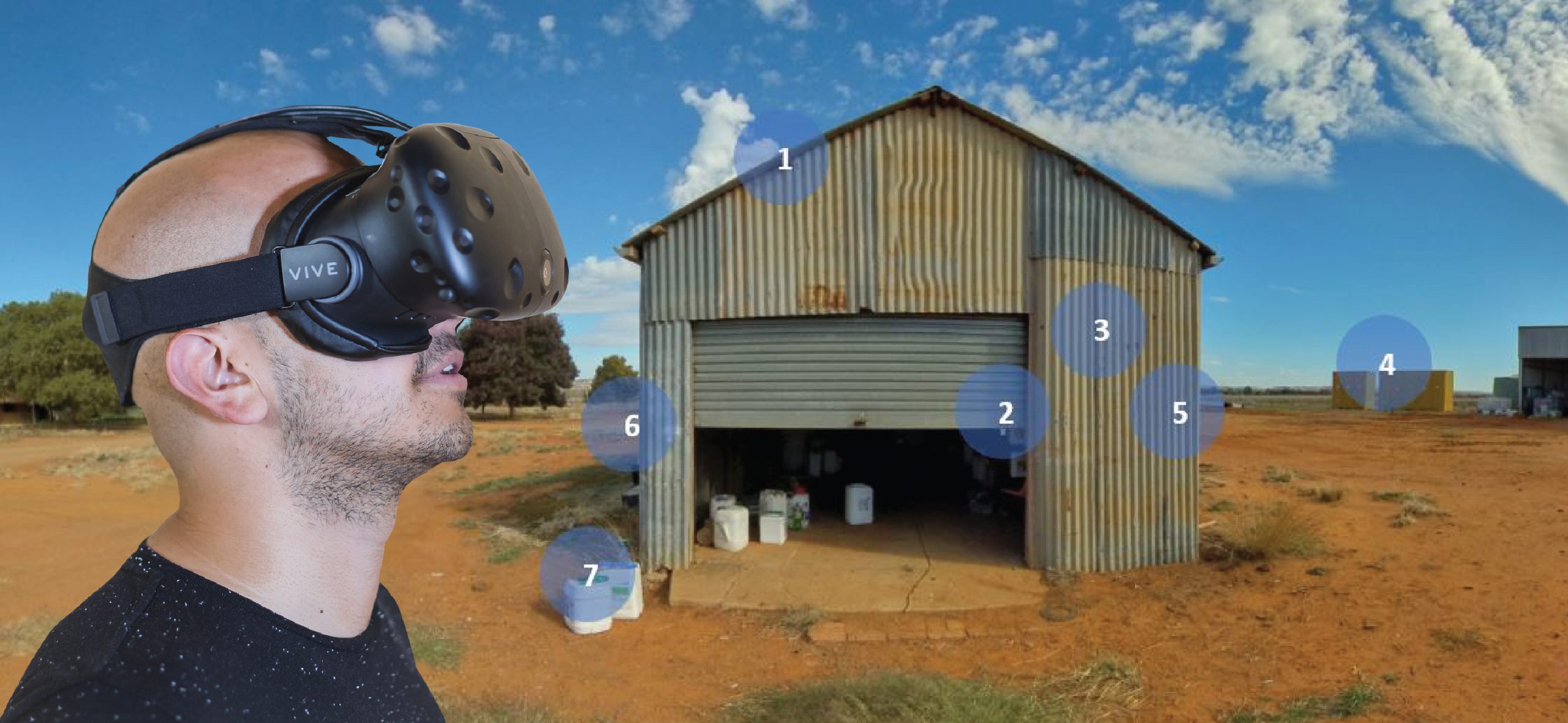NSW is currently experiencing high mouse numbers in cropping regions. Monitoring, detection and integrated management across farm are crucial for reducing the risk of mouse impacts. Reducing access to and covering food, together with baiting with zinc phosphide, can control local mice populations.
To assist landholders control mice, the Grains Research and Development Corporation (GRDC) and CSIRO have compiled the ‘Tips and Tactics: Better Mouse Management’ guide.
This practical guide provides tips and advice on a range of issues, including:
- integrated control advice – year-round, at sowing (autumn), during crop growth (winter) and prior to harvest (spring and summer)
- baiting recommendations
- monitoring techniques to understand local activity
This guide can be downloaded here.
Baiting mice with zinc phosphide
NSW Department of Primary Industries has successfully applied to the Australian Pesticides and Veterinary Medicines Authority (APVMA) to allow the use of zinc phosphide bait on bare fallows prior to the 2021 sowing period.
The permit allows for bait to be applied late in the afternoon to maximise consumption of bait by mice, which generally feed at night, and is in effect until August 2022.
The approval requires users of zinc phosphide to report any bird kill incident following application of the bait to fallow land to either NSW Department of Primary Industries or NSW Environment Protection Authority.
Producers should not harvest crops or allow livestock to graze baited areas for 14 days after application.
NSW Department of Primary Industries and Local Land Services have produced a factsheet on APVMA registered zinc phosphide products for mouse control in paddocks.
Zinc Phosphide for Mouse Control in Paddocks PDF, 229.89 KB
$50M Mice Support Package
The NSW Government has announced a $50 million support package to help landholders, households and small businesses tackle the ongoing impacts of mice across rural and regional NSW.
As part of the package, the NSW Government has sought an emergency approval from the APVMA for the use of bromadiolone to control mice in NSW, through treated grain.
If the emergency use permit is granted, landholders can only use bromadiolone-treated grain around the perimeter of crops.
This is not an in-crop solution and it should not be used anywhere else, such as around the perimeter of buildings or in paddocks where crops have not been sowed.
Twenty locations across regional and rural NSW have been identified for grain treatment sites to help landholders manage mice.
Pending APVMA approval, these sites will operate by appointment only. To find your nearest location, click here.
If you would like to receive updates for this service, click here to register https://www.lls.nsw.gov.au/mice/$50m-mice-support-package .
Grain Treatment Sites
Twenty locations across regional and rural NSW have been identified for grain treatment sites to help landholders manage mice.
Opening of these sites is subject to the Australian Pesticides and Veterinary Medicines Authority (APVMA) approval for the use of bromadiolone to control mice in NSW, through treated grain.
If the emergency use permit is granted, landholders can only use bromadiolone-treated grain around the perimeter of crops.
This is not an in-crop solution and it should not be used anywhere else, such as around the perimeter of buildings or in paddocks where crops have not been sowed.
Landholders can register to receive updates on when these sites will open. To register, click here https://www.lls.nsw.gov.au/mice/grain-treatment-sites
Resources
- GRDC – Mouse Control
- GRDC and CSIRO – Mouse Update, March 2021 PDF, 1275.17 KB
- CSIRO – Tackling Australia’s persistent mouse problem
- Mouse Alert
- Department of Primary Industries – Mouse management
- Local Land Services and Department of Primary Industries Zinc Phosphide factsheet. PDF, 229.89 KB
The above information is supplied by Local Land Services



